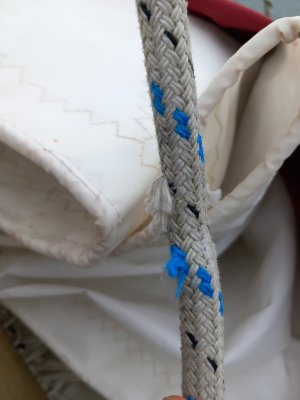conehead
New member
Hi,
I noticed yesterday that the halyard on my mainsail has frayed on one particular part. I think it might have been rubbing on the spreader as it's at the right height when the halyard is attached to the end of the boom, although I'm not sure how as I've been tying the line away from the mast when the boat isn't in use.
Anyway, I'm wondering how much life is left in the halyard at this point. Should I stop using it immediately and get a replacement, or will it be serviceable for a while to come and I should just keep an eye on it? I've not been sailing very long and I'm new to boat ownership too, so I don't really have any experience on this and would welcome (friendly) advice.
Cheers
I noticed yesterday that the halyard on my mainsail has frayed on one particular part. I think it might have been rubbing on the spreader as it's at the right height when the halyard is attached to the end of the boom, although I'm not sure how as I've been tying the line away from the mast when the boat isn't in use.
Anyway, I'm wondering how much life is left in the halyard at this point. Should I stop using it immediately and get a replacement, or will it be serviceable for a while to come and I should just keep an eye on it? I've not been sailing very long and I'm new to boat ownership too, so I don't really have any experience on this and would welcome (friendly) advice.
Cheers


